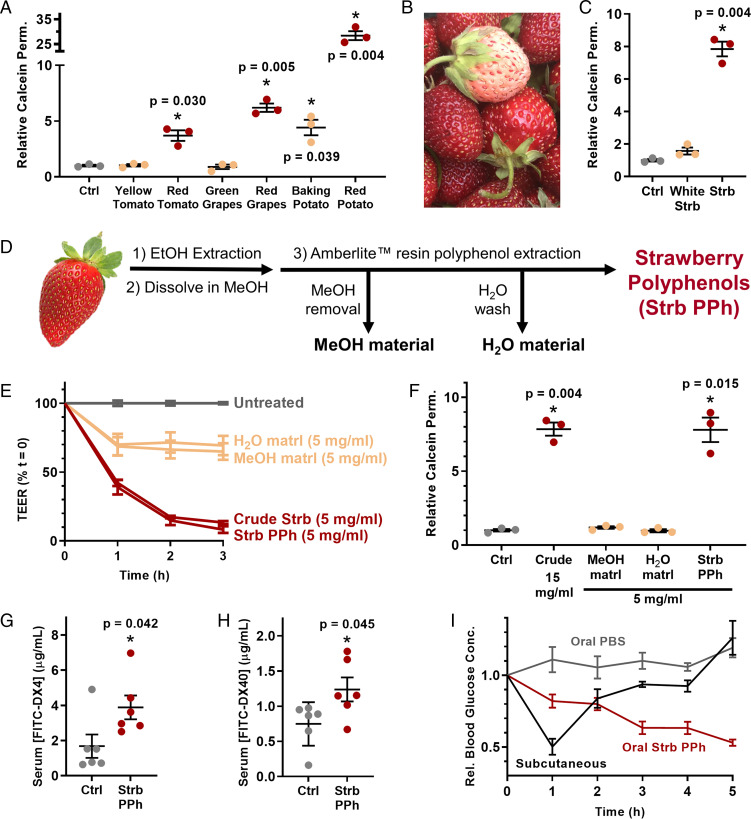Fig. 2.
Polyphenolic compound(s) in strawberry enhance intestinal permeability. (A) Only the red varieties of several foods enhanced the permeability of Caco-2 monolayers. (B) White Carolina Pineberry strawberries were grown for this study. (C) White strawberries, which lack polyphenolic pigments, were not effective permeation enhancers. (D) Polyphenols were extracted from strawberry via adsorption to Amberlite resin and a sequence of washing steps. (E) Polyphenolic compounds isolated from strawberries enhanced intestinal permeability by TEER and (F) by calcein permeability to the same extent as crude strawberry extract at one-third of the dose. (G) Treatment with strawberry polyphenols doubled the uptake of orally administered 4-kDa dextran (FITC-DX4) and (H) 40-kDa dextran (FITC-DX40) in mice. (I) One unit per kilogram of insulin was delivered by intestinal injection following oral delivery of either saline (control) or strawberry polyphenols and compared to subcutaneous injection of the same dose. Strawberry polyphenols induced sustained reductions in blood glucose levels. Integrated areas above the curves from H demonstrate that strawberry polyphenols enabled significantly better insulin bioactivity than subcutaneous injection. Error bars display SEM (n = 3 replicate wells for A, C, and E, n = 6 mice for panels F and G, and n = 5 mice for H and I). *P < 0.05 with respect to control by two-tailed t test with Welch’s correction.

